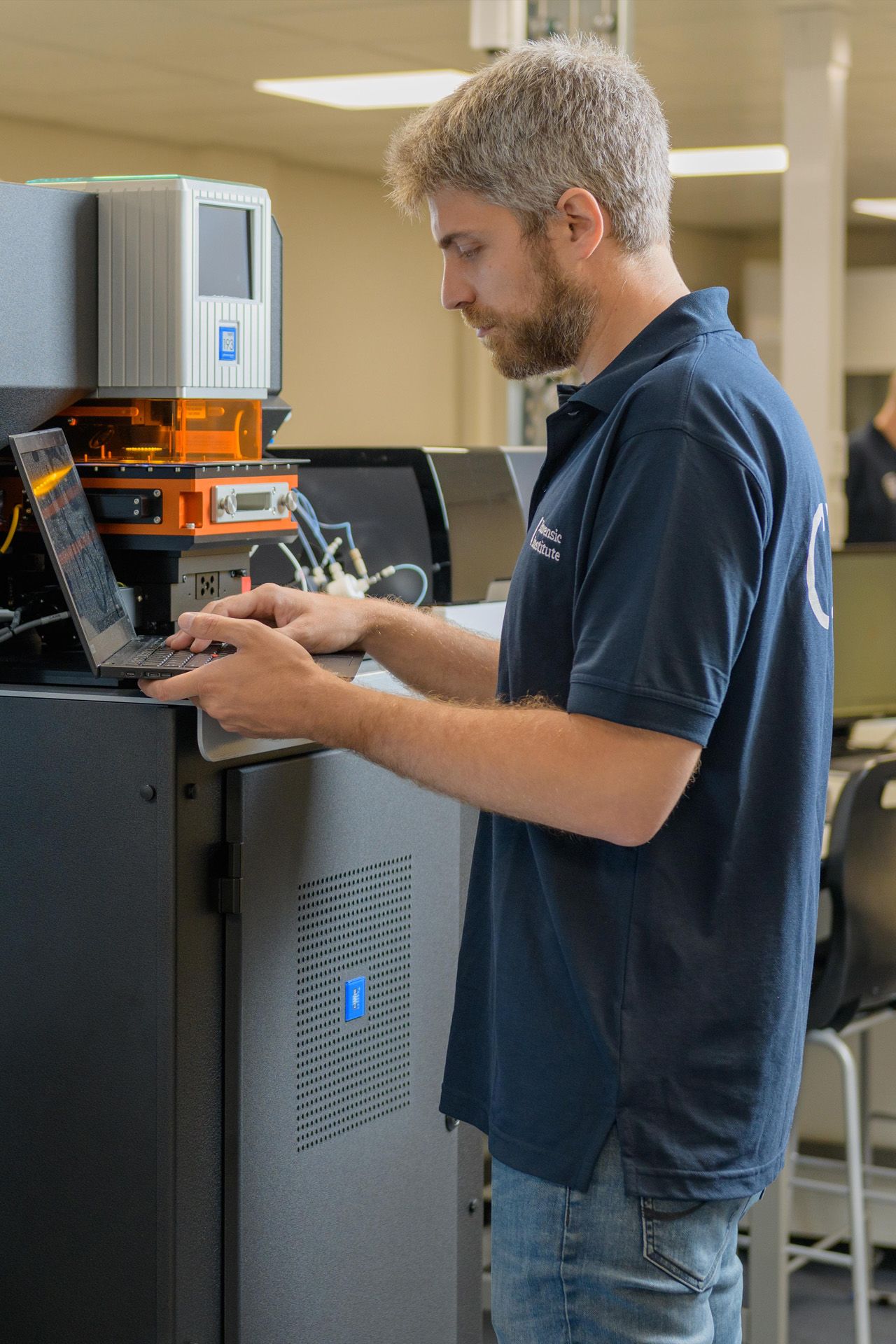Countering art crime to protect the world's cultural heritage
- Art is the third biggest criminal market, after drugs and weapons
- Cranfield’s unique non-destructive analytical techniques have helped counter art forgeries and smuggling
- The new methods are designed for examining high-value art objects too precious to take samples from

The global art market, involving trading of more than £50 billion each year, is blighted by criminal activity and described by some as a lawless ‘Wild West’. For more than 40 years, the art and antiques sector had been looking for an easier and more trustworthy means of ensuring authenticity. The use of technology has been rare, due to unreliability and the destructive nature of available analysis techniques.
Cranfield’s development of unique non-destructive analytical techniques, building on forensic technologies used in criminal detection work, has led to police, museums, collectors, major art fairs, auction houses and the military in the UK and Europe to start to be able to counter the illicit trade in forgeries and copies, and the smuggling of genuine items illegally obtained.
The use of Cranfield’s technologies since 2013 has led to guaranteed valuations of tens of millions worth of items.

Reliable scientific evidence is fundamental to ‘cleaning up’ the market, protecting clients and the wider general public, re-building trust around the value of items, and limiting a channel known to be used by criminals for money laundering and raising funds

Fruits of research
Cranfield’s researchers pioneered the use of the latest low and non-destructive analytical approaches, normally used for crime scene investigations, for working on art crime cases. The approach allows trace elements from an object to be analysed and compared with similar objects of a confirmed provenance, providing critical scientific evidence on location of origin and dating.
The work focused on techniques for examining high-value art objects, securing evidence that could be used for criminal prosecutions against forgers and smugglers — and, in particular, how to carry out analysis of museum art, such as early glass and glazed porcelain objects, too precious to take samples from.
The University’s Forensic Laboratory was used to explore the potential of X-Ray fluorescence spectroscopy (XRF) (where elements in an object are identified via induced emission of characteristic X-Rays); Environmental Scanning Electron Microscopy (SEM), allowing for analysis of objects in their natural, uncoated state; and, Laser Ablation Inductively Coupled Plasma Mass Spectrometry (LA-ICPMS), where a laser is used to obtain micro-samples.
The Cranfield team was the first to establish a database of evidence from a range of specific types of dated objects: the all-important baseline that suspected fakes and smuggled items could be judged against.
Objects from established museum and private collections were examined using the new techniques to create a timeline of the different compositions for different parts of objects (such as bodies, glazes and pigment decorations). This included, for example, analysis of Meissen porcelain from the Hoffmeister collection, one of the largest and best dated collections in the world; along with Sevres and English porcelain; Chinese blue and white and famille rose porcelain. Cranfield’s forensic methods were also applied to glass from the very beginning of glassmaking, 1500 BC, right through to the 19th century.

Work included analysis of Meissen porcelain from the Hoffmeister collection, one of the largest and best dated collections in the world

Re-building trust in the art market
Art is the third biggest criminal market, after drugs and weapons, according to the Federal Bureau of Investigation. Thieves steal between $4 and $6 billion worth of art objects — often causing damage, undermining trust in the authenticity and provenance, and blighting a global art market worth more than £50 billion. Looted antiquities are also know by law enforcement bodies to be a significant source of insurgent and terrorist funding.
With only limited resources available to policing operations for art crime, businesses and cultural institutions are the focus of pressure to prove they are dealing in works with established provenance.
Cranfield’s work has opened up a whole new realm of defence against criminals and a means of securing trust in the authenticity of high value art:
- establishing which items in various important collections of European porcelain might be 19th century copies rather than 18th century originals for auction house Bonhams (and so worth thousands rather than tens of thousands of pounds). The resulting confidence helped a world-record price to be obtained for a porcelain snuff box in one of the sales;
- carrying out ongoing work with Bonhams, Christies and Sothebys, as well as other auction houses on their very high value or potentially controversial pieces;
- taking on a wide range of commercially or historically sensitive commissions from more than 20 museums and collectors worldwide, including UK Museums and institutions in North America and Europe; this included work on other European wares such as majolica, Limoges enamels, Islamic glass, early and Roman glass — and Chinese porcelain, where booming demand over the past 30 years has meant a trend for copies;
- building relationships with police and trading standards bodies nationally; the Metropolitan Police Arts and Antiques Unit has used Cranfield as its primary source of scientific advice on seized or discovered antiquities, including historic art treasures from Egypt, Iraq and Syria;
- And as a result of these successes, the methods have become established as a model of good practice, with other universities purchasing LA-ICPMS equipment and extending the availability of services to the art market.

The Cranfield lab specialises in commercially and historically sensitive commissions from museums and collectors worldwide, stetching across London and the UK to include institutions in North America and Europe.

Defence and Security
Cranfield is one of the world’s leading universities for defence and security education, research and consultancy. Our academics’ expertise ranges from energetics and forensic sciences to international stabilisation and cyber security.

Cookies & Privacy
We use cookies when you visit this website to analyse the web traffic, to optimise the performance and content of the website and to promote trust and security. Cookies are small text files that are stored by your Internet browser on your computer. These cookies do not include any personal information, they are only used for the duration of your web session to improve your experience. Please visit our Privacy policy (link below) for data processing details.
